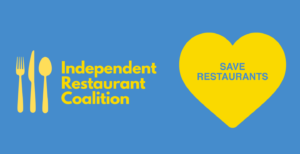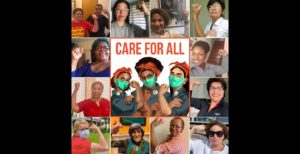3 Tips to Help Advocacy Organizations Digitally Weather the Pandemic

Like many organizations, nonprofits have been hit hard by COVID. More than 70 percent report a significant drop in fundraising revenue and disruption to contact with their donors and recipients. Record-high unemployment and financial stress also make it harder for people to reach into their wallets to make a donation — even if the cause is close to their hearts.
For nonprofits that operate on razor-thin margins, these challenges could be devastating. In the words of the CEO of Goodwill Industries International, “The financial impact of the crisis has put the very survival of many essential service providers at risk.”
Organizations need to take a creative and digital-first approach to engaging potential supporters in an overwhelmed public — whether asking for donations or driving advocacy. Working with several nonprofit and advocacy clients over the years, we’re always testing new ways to effectively move audiences to action. Below are three organizations that succeeded under tremendous pressure with tactics that can be used both now and in the future:
1. GIVEDIRECTLY MADE IT PERSONAL AND RELEVANT.
GiveDirectly is a nonprofit that lets donors send money directly to the world’s poorest. When it became clear that COVID-19 created a challenge unlike any we’ve faced in our lifetime, GiveDirectly shifted its Africa-focused direct cash program to help communities most affected by the pandemic. The organization’s US initiative, Project 100, strategically focused on humanizing every single donation to break through and connect with donors.
Project 100 set a goal to raise $100 million in 100 days to be distributed as $1,000 in cash to 100,000 families. As families began to receive their donations, GiveDirectly encouraged them to send in videos that expressed the life-changing impact it made. GiveDirectly turned these powerful stories into a video that explained the importance of these immediate donations, further fueling the giving cycle. The organization also designated space on its website to host all of the individual stories, and amplified them through interviews with the media. In less than a month, GiveDirectly raised more than $80 million and are well on their way to hitting the $100 million goal.
When building a fundraising campaign, particularly in trying times, make your content personal and humanizing. Video, quotes, and stories that encompass your organization’s mission can go a long way in moving people to action.
2. THE INDEPENDENT RESTAURANT COALITION QUICKLY BUILT A VIRTUAL COMMUNITY.
Independent restaurants around the world have closed during the pandemic and four of five may never reopen. The Independent Restaurant Coalition (IRC) was formed to save local restaurants by asking Congress to provide long-term relief for 500,000 small restaurants and their 11 million workers. While many were aware that the restaurant industry was struggling, there wasn’t a unified voice or call to action for restaurants and those who support them — IRC organized quickly to fill that void.
To develop a strong and diverse network, IRC connected chefs and restaurateurs from around the country through digital platforms. Compelling messaging on a new website, email list, and social channels helped engage as many people as possible. With 60,000 brand new email subscribers on board and over 20,000 new followers across social platforms, IRC hosted a Zoom Town Hall (with high-profile members like José Andrés) to encourage two-way communication with its members and provide specific guidance on what action was needed. In just two months, IRC has become one of the strongest coalitions in the space, generating over 100,000 emails to lawmakers — pushing forward real action on the Hill — without a single in-person convention.
Building a strong community today requires investment in digital advocacy tools and a dedication to two-way, virtual communication. Make time to listen to your community and create accessible ways for them to take action with a unified voice while socially distancing.

3. NATIONAL DOMESTIC WORKERS ALLIANCE GOT #CREATIVE TO DRIVE AWARENESS WITH NEW AUDIENCES.
The National Domestic Workers Alliance (NDWA) has long been a vocal advocate for nannies, house cleaners, and home care workers — the majority of whom are immigrants and women of color. As support for frontline workers grew across the country, NDWA saw an opportunity to drive awareness of domestic work as essential work while strengthening their already growing movement.
Following the success of their Coronavirus Care Fund campaign — which raised $19 million from 94,000 people — NDWA decided to get creative with a digital challenge to build on this outpouring of support. They launched the #RosieChallenge — a Rosie the Riveter-style selfie challenge — to encourage people to show solidarity with caregivers and domestic workers. They hoped to engage both loyal supporters and new ones through the fun of joining in on a digital challenge. NDWA reached out to members of Congress, as well as existing partners and supporters, to get them on board to participate. In less than a week, the campaign gained traction, with Rep. Jayapal, Rep. Omar, Rep. Tlaib, Rep. DeLauro, and more posting #RosieChallenge selfies on their social accounts, encouraging their hundreds of thousands of followers to do the same.
In an extra crowded digital environment, you need to get creative to break through the noise online. Explore ways to add a fun element to your social media campaign, inspiring existing followers to participate and help you engage with new audiences.
